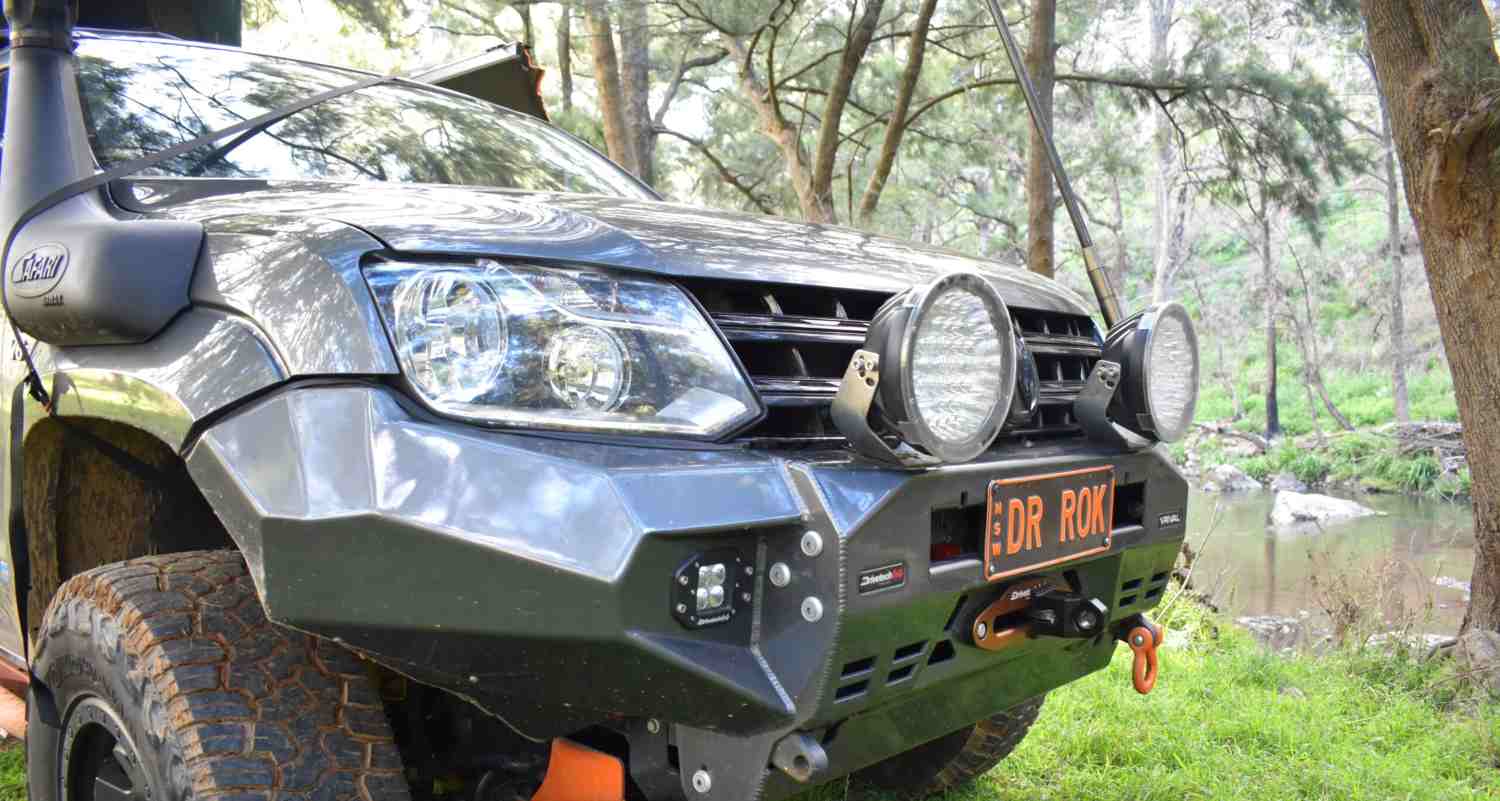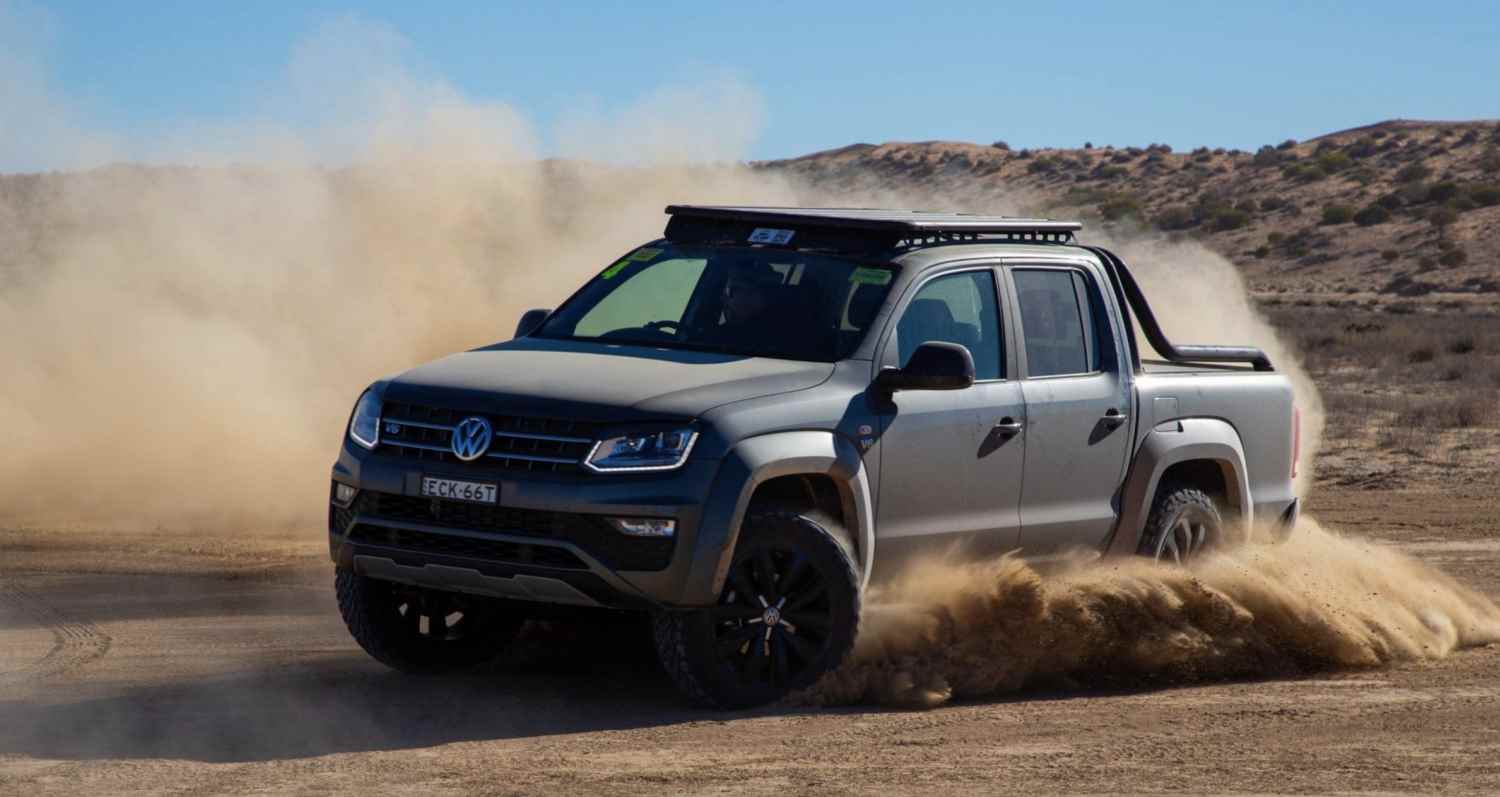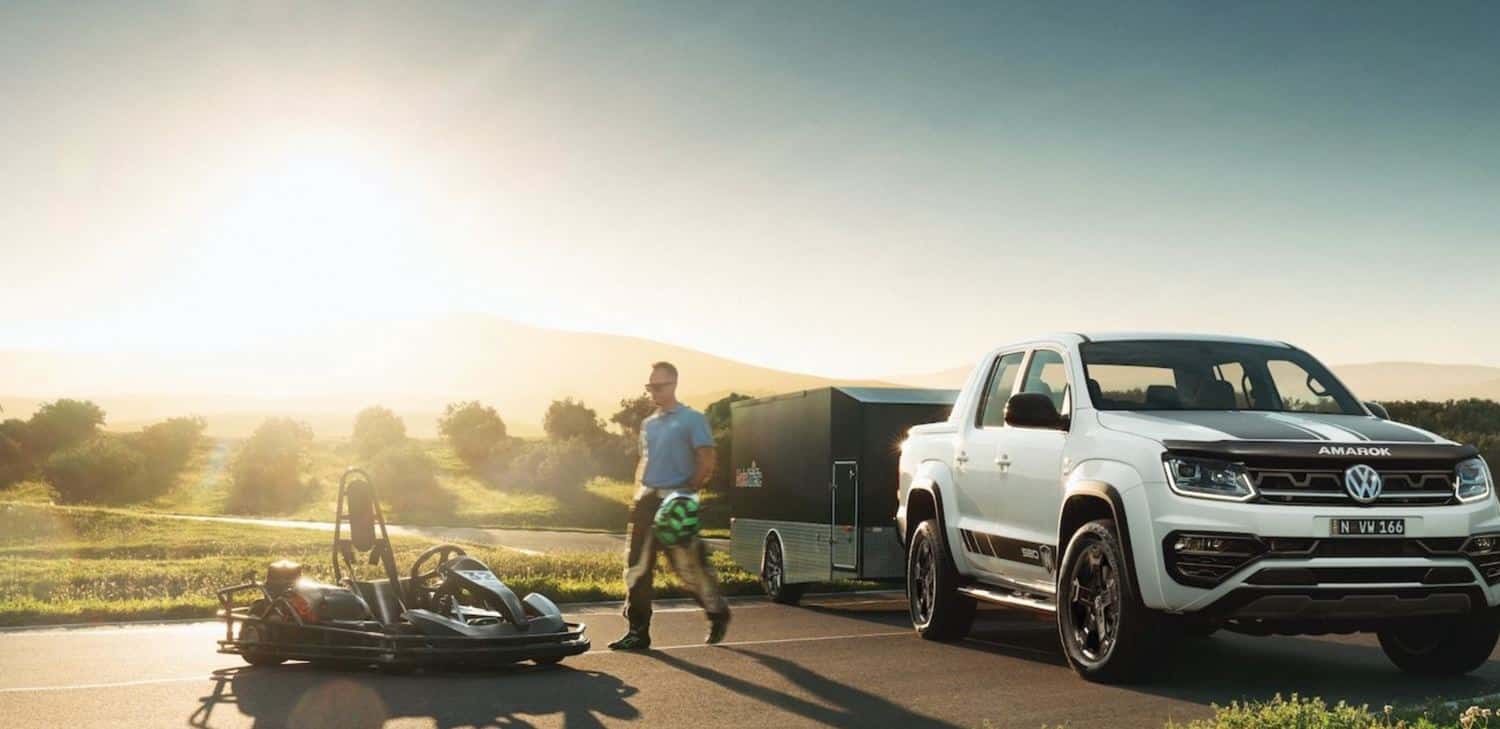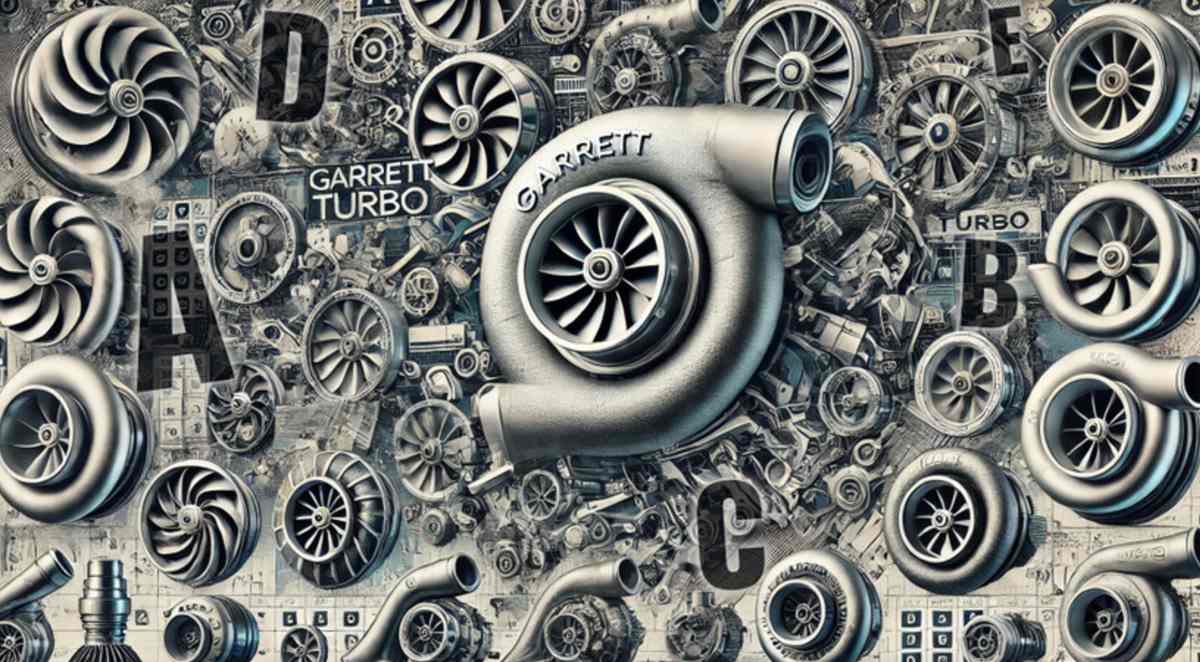Amarok tuning: How to get more power from your VW Amarok
Looking to get more power from your VW Amarok? Explore tuning options like power modules, turbo upgrades, and performance mods.
Advertisement
If you’re looking to get more power out of your VW Amarok, tuning is the way to go. Whether it’s a power module, a turbo upgrade, or other performance mods, there are plenty of ways to boost your VW Amarok’s power and responsiveness. In this guide, we’ll break down the best Amarok tuning options and what you need to know before making any upgrades.
VW Amaroks have always been a bit of a dark horse on the Australian wheeling scene. A lot of folks tend to write them off as overly complex and “they ain’t like muh HiLux so they’re crap!”
The reality is, though, that the Amarok is one of the most underrated rigs in the game. That’s not to say that a bit of specialist knowledge isn’t required, and some patience with “ze Sherman” way of doing things won’t hurt. But for not a lot of money and a little know-how on Amarok tuning, you can turn a VW into a fire-breather that will eat any non-engine-swapped HiLux or BT-50 or Triton or most other utes for früstück (that’s Deutsch for breakfast, because we’re heaps cosmopolitan and that). And yep, that goes for factory V8 LC79s too.
Yeah, we know the pre-23 V6 and auto models don’t have low range, and that’s a sticking point for some. But you know what they do have? A nice-n-deep 4.71 first gear ratio in the so-sweet ZF 8-speed transmission (something most manufacturers didn’t catch up to until the last couple years, hanging onto their old 6-speeds instead) and a big ol’ torque converter which essentially acts as a low range gear off-road to the point where you’d be hard-pressed to tell the difference anyway.
Oh, and they had one of the most unbreakable (once you ditch the EGR cooler that’s about as sturdy as a fart in a hurricane) four-pot engines and easily the most powerful-in-class V6 turbo diesel, which made equivalent utes from Japanese manufacturers look downright neutered in comparison.

But the real beauty of these things is their ability to produce so much more, and safely. There are examples getting around with 400+hp at the wheels, but for the purposes of this article, we’ll keep the Amarok tuning to a “reliability above all” ~250hp and 600NM or so, which is about a 25% increase over stock and, for a 4X4, pretty darn quick.
Here’s a look at some tried and true methods for getting the most out of your VW Amarok. Just don’t get mad at us when your Ranger and Luxy driving mates won’t talk to you anymore.
Cost: from $1000-$2500
Unless you have your eye on big numbers, the first (and only, for most) stop is getting the ECU to do its job better. An easy 25% gain is available, and fuel economy is often increased with sensible driving, too. There’s literally no downside to a good Amarok tuning.
While you’re there, a transmission tune can be a good idea, too. Mainly because VW, in their infinite wisdom, decided to protect the driveline by limiting available torque when in reverse. More than one Amarok owner has had a WTF moment when attempting to back their boat up a steep driveway or when cruising on the beach and trying to reverse out of a bog. Gearbox tuning for your Amarok can sort this and make all available torque accessible when going backward.
There are two broad approaches to Amarok tuning. One is getting a re-flash of the ECU, and the other is getting a plug-in power module. Which one is for you is highly subjective, but let us make one thing clear: There are tunes, and then there are good tunes. Just like there are modules, then there are good modules. Having a bad one of either is going to cause problems, so do your research and get an Amarok specific brand of either.

Don’t just jump on eBay and slap down a couple hundred bucks on the credit card for a nondescript black box or go to some toothless bloke’s shed and let him plug in his laptop. And don’t buy into anything that says it can “double power” or any other grandiose claims that sound (and are) too good to be true. If you want more than a 25% increase, your chosen specialist should be able to tell you what’s required in your Amarok tuning and the negative effect it’ll likely have on reliability.
For dyno tuning, CRDTech have a solid rep, For power modules, we’re big fans of the Steinbauer product. Both will get a pre-23 V6 auto into the 600NM range.
Just a side note, though: Amarok V6 manuals won’t get as much power from tuning, thanks to the factory clutch, which wears out quickly when significantly more power is pushed through it. Just FYI.
Cost: from $2750 (Steinbauer module)
The newer Amarok’s ECU uses a rolling code that basically prevents any new code from being added to it – which is what tuning does, in a nutshell. This means there’s no flash tuning currently on the market that’ll work, although we’ve heard talk of some companies having success with boot tuning – which is removing the ECU from the vehicle, opening it up and physical soldering in new componentry. However, nothing is commercially available as far as we know (and we asked the main players in this field).
Even so, Diesel Care has their Steinbauer Power Module for the `23-onwwards Amaroks which has undergone an exhaustive real-world testing process to ensure it’s capable of handling Aussie conditions.
Steinbauer’s Austrian Engineers landed in Australia and began developing the software (actually for the Next Gen Ranger, but it’s exactly the same engine so it’ll work in Amaroks too) as soon as the model landed, and despite the technical hurdles, have delivered a product that nets a solid upgrade to the already impressive power and torque figures. Diesel Care tell us they’re getting an easy 170kW (~230hp) at the back wheels So if you’re Amarok is towing heavy or you just like your get-up-and-go, then this is probably the best tuning option on the market.

Cost: from $700
All pre-23 Amaroks are engineered to allow precise amounts of airflow through the front grille to help the radiator shed engine heat. It’s very German of them. However, bolting a hefty great lump of steel in front of this grille (aka a bullbar) can often cause restrictions to the airflow and overheating. When you consider that a lot of aftermarket manufacturers take an existing bullbar design, for say a HiLux, then re-jig the mounts and lines a little to suit the Amarok without taking into account the airflow through the cooling pack, it’s unsurprising there’s problems. So, pro tip: make sure the bar you’re looking at does not block the air’s passage through the grille. Again, speak to a specialist to get the good oil.
A popular upgrade is to swap out the stock front mount for a thicker Wagner or PWR charge cooler. While this is not a totally necessary mod, and probably won’t account for a huge power upgrade on its own, it will allow for slightly more aggressive tuning to be run in your Amarok if that’s your bag.
The other big one is an auto transmission cooler, especially for people who tow. The Amarok utilises a thermostat of sorts that allows more transmission fluid flow when a certain temperature has been reached. This is designed for vehicles in European countries that regularly see well-below-zero temps. Over here, this thermo-valve is not required, and part of the transmission cooler installation is to do away with it. You can’t over-cool transmission fluid in this country, folks.
When towing with an auto (any auto, not just Amaroks), it’s a good idea to shift the trans into manual mode when approaching a hill and drop it back a gear or two. This’ll cause the engine to rev a little higher, but it also circulates the ATF more effectively, allowing it to stay cooler for longer. Towing uphill in ‘D’ should be frowned upon unless you’re pulling an empty box trailer with 1000NM on tap. Even then I’d still probs do it anyway.

Cost: from $650 – $2500
Louder exhausts are cool. Let’s not sugarcoat it. They sound good and make you smile when you give it some curry on takeoff. However, there are two points to make regarding fitting an exhaust to your Amarok. One: The factory exhaust is like 2.75in, so fitting a 3in (or larger) diameter pipe isn’t going to do much for you power-wise. Two: The turbo essentially acts like a muffler, so even with a bigger exhaust, you’re not going to be sounding like a top fuel dragster here, Champion.
If you want to fit one up, then by all means, go for it. We’re just trying to manage expectations.
Of course, if you’re going down the long and expensive road of big horsepower, then an exhaust makes a huge amount of sense.
Cost: from at least $5500 (plus tuning)
If you are a big-number chaser, then a turbo upgrade may be of interest. You can make a fair bit more than even a tuned V6, but (and it’s a big one) pretty much all tuners, especially the good ones, will caution you that they’ll no longer be able to guarantee your reliability when you start pushing towards 350-400hp. It’s absolutely doable and will likely last a good long time, but there’s no safety net once you move to this point (or beyond).
Garret GTD2863VZ or GTD2872VZ turbos are both tried and true upgrades for the stock snail, and you’ll need an upgraded front mount, upgraded fuel pressure sensor, a cat-deleted exhaust, the DPF and EGR systems removed (the last two mods rendering your vehicle illegal on-road) and a few other bits and pieces to make it work.
Is it possible? Absolutely. Is it worth the time and effort and thousands of bucks? That’s your call. On the one hand, you’d be gapping V8 Commodores; on the other, geez, it’s a lot of money for a potential hand grenade. But again, that’s on you. You’re probably braver than I am.

Cost: ~$2500
At the big-power end of things, water meth injection kits are available and popular. They basically allow your Amarok much more aggressive tuning, as they keep internal engine temps a lot cooler. Are they needed for a daily driver that tows the van a couple of dozen times a year? Not even a little.
Are they fantastic to tell your mates about? Hell yes.